- Clone
- 12G9A36 (See other available formats)
- Regulatory Status
- RUO
- Other Names
- Interferon regulatory factor-7 (IRF-7)
- Isotype
- Mouse IgG2b, κ
- Ave. Rating
- Submit a Review
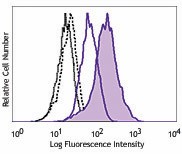
| Cat # | Size | Price | Quantity Check Availability | Save | ||
|---|---|---|---|---|---|---|
| 656003 | 25 tests | 132€ | ||||
| 656004 | 100 tests | 317€ | ||||
IRF-7 is a member of the interferon regulatory transcription factor family that plays key regulatory roles in innate immunity. Upon virus infection, IRF-7 forms a complex with MyD88 and TRAF6 when stimulated by toll-like receptors TLR7, TLR8, and TLR9, which in turn results in nuclear translocation and induction of interferon gene expression. IRF-7 gene expression is upregulated by the stimulation of interferon through the Jak-STAT signaling pathway, which forms a positive feedback loop. The protein level of IRF-7 after activation is then downregulated by the ubiquitin-proteasome system to avoid excessive production of interferons that may cause damage to the host. Virus induced type I interferon expression was completely abrogated in IRF-7 knockout mice, suggesting that IRF-7 is critical for interferon mediated host defense during virus infection.
Product DetailsProduct Details
- Verified Reactivity
- Human
- Antibody Type
- Monoclonal
- Host Species
- Mouse
- Immunogen
- Partial IRF7 recombinant protein (127-503 a.a.)
- Formulation
- Phosphate-buffered solution, pH 7.2, containing 0.09% sodium azide and BSA (origin USA)
- Preparation
- The antibody was purified by affinity chromatography and conjugated with PE under optimal conditions.
- Concentration
- Lot-specific (to obtain lot-specific concentration and expiration, please enter the lot number in our Certificate of Analysis online tool.)
- Storage & Handling
- The antibody solution should be stored undiluted between 2°C and 8°C, and protected from prolonged exposure to light. Do not freeze.
- Application
-
ICFC - Quality tested
- Recommended Usage
-
Each lot of this antibody is quality control tested by intracellular immunofluorescent staining with flow cytometric analysis. For flow cytometric staining, the suggested use of this reagent is 5 µl per million cells in 100 µl staining volume or 5 µl per 100 µl of whole blood.
- Excitation Laser
-
Blue Laser (488 nm)
Green Laser (532 nm)/Yellow-Green Laser (561 nm)
- Application Notes
-
This clone is not recommended for ChIP (Chromatin Immunoprecipitation) assays (as determined by in-house testing).
- RRID
-
AB_2563006 (BioLegend Cat. No. 656003)
AB_2563007 (BioLegend Cat. No. 656004)
Antigen Details
- Structure
- 503 amino acids, predicted molecular weight of 54 kD, contains an IRF tryptophan pentad repeat responsible for DNA binding
- Distribution
-
Shuttles between the cytoplasm and nucleus; activated (phosphorylated) form of IRF-7 accumulates in the nucleus
- Function
- Transcription factor that transactivates proinflamatory cytokines and type I interferon genes in response to virus infection
- Interaction
- Forms homodimer or heterodimer with IRF-3, interacts with TICAM-1, TICAM-2, MyD88, and TRAF6
- Cell Type
- Dendritic cells
- Biology Area
- Cell Biology, Immunology, Innate Immunity, Signal Transduction, Transcription Factors
- Antigen References
-
1. Owens BM, et al. 2012. PLoS One. 7:e41050.
2. Yu Y, et al. 2010. Immunity. 33:863.
3. Liang Q, et al. 2011. J. Immunol. 186:1001.
4. Buss C, et al. 2010. J. Immunol. 184:3072.
5. Joo CH, et al. 2007. J. Virol. 81:8282.
6. Balachandran S, et al. 2007. J. Immunol. 178:2429. - Gene ID
- 3665 View all products for this Gene ID
- UniProt
- View information about IRF7 on UniProt.org
Related FAQs
- What type of PE do you use in your conjugates?
- We use R-PE in our conjugates.
Other Formats
View All IRF7 Reagents Request Custom Conjugation| Description | Clone | Applications |
|---|---|---|
| Purified anti-IRF7 | 12G9A36 | WB,ICC |
| PE anti-IRF7 | 12G9A36 | ICFC |
| Alexa Fluor® 488 anti-IRF7 | 12G9A36 | ICFC |
| Alexa Fluor® 647 anti-IRF7 | 12G9A36 | ICFC |
| Direct-Blot™ HRP anti-IRF7 | 12G9A36 | WB |
| APC anti-IRF7 | 12G9A36 | ICFC |
Customers Also Purchased
Compare Data Across All Formats
This data display is provided for general comparisons between formats.
Your actual data may vary due to variations in samples, target cells, instruments and their settings, staining conditions, and other factors.
If you need assistance with selecting the best format contact our expert technical support team.
-
Purified anti-IRF7

Total cell lysates from untreated Jurkat cells (Lane 1) or J... 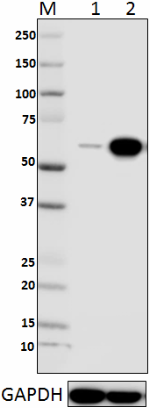
Total lysates (15 µg protein) from Jurkat (lane 1) and Jurka... -
PE anti-IRF7
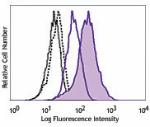
Overnight starved Jurkat cells were treated with or without ... -
Alexa Fluor® 488 anti-IRF7
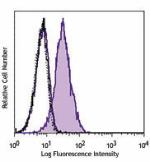
Overnight starved Jurkat cells were treated with or without ... -
Alexa Fluor® 647 anti-IRF7
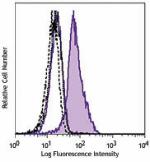
Overnight starved Jurkat cells were treated with or without ... -
Direct-Blot™ HRP anti-IRF7
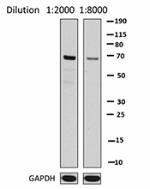
15 µg of total protein extract from THP-1 was resolved by 4-... -
APC anti-IRF7
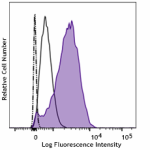
Overnight starved Jurkat cells were treated with or without ...

 Login / Register
Login / Register 










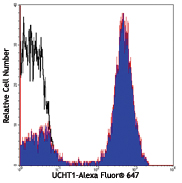
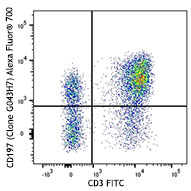
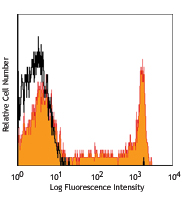
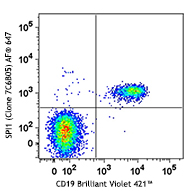







Follow Us